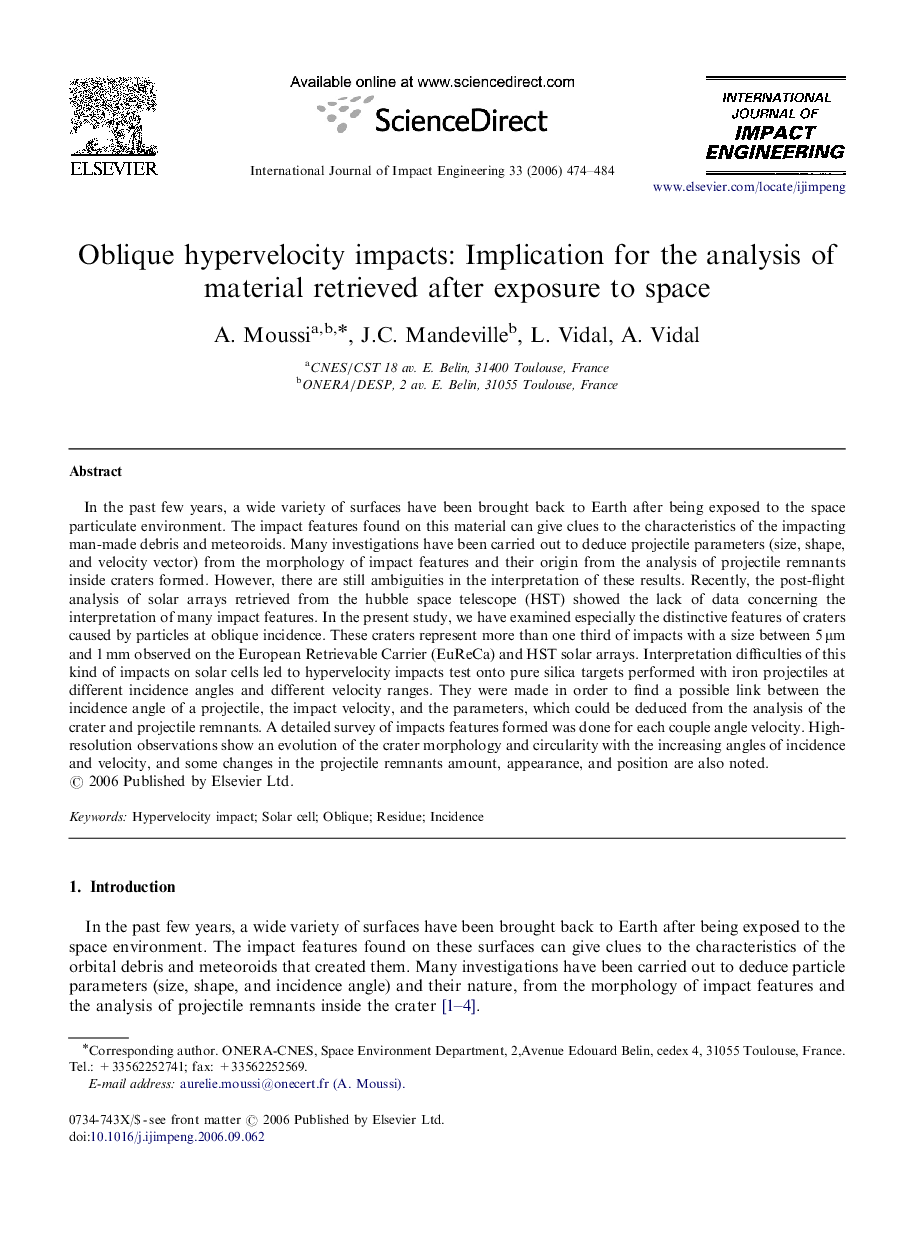| Article ID | Journal | Published Year | Pages | File Type |
|---|---|---|---|---|
| 779619 | International Journal of Impact Engineering | 2006 | 11 Pages |
In the past few years, a wide variety of surfaces have been brought back to Earth after being exposed to the space particulate environment. The impact features found on this material can give clues to the characteristics of the impacting man-made debris and meteoroids. Many investigations have been carried out to deduce projectile parameters (size, shape, and velocity vector) from the morphology of impact features and their origin from the analysis of projectile remnants inside craters formed. However, there are still ambiguities in the interpretation of these results. Recently, the post-flight analysis of solar arrays retrieved from the hubble space telescope (HST) showed the lack of data concerning the interpretation of many impact features. In the present study, we have examined especially the distinctive features of craters caused by particles at oblique incidence. These craters represent more than one third of impacts with a size between 5 μm and 1 mm observed on the European Retrievable Carrier (EuReCa) and HST solar arrays. Interpretation difficulties of this kind of impacts on solar cells led to hypervelocity impacts test onto pure silica targets performed with iron projectiles at different incidence angles and different velocity ranges. They were made in order to find a possible link between the incidence angle of a projectile, the impact velocity, and the parameters, which could be deduced from the analysis of the crater and projectile remnants. A detailed survey of impacts features formed was done for each couple angle velocity. High-resolution observations show an evolution of the crater morphology and circularity with the increasing angles of incidence and velocity, and some changes in the projectile remnants amount, appearance, and position are also noted.
